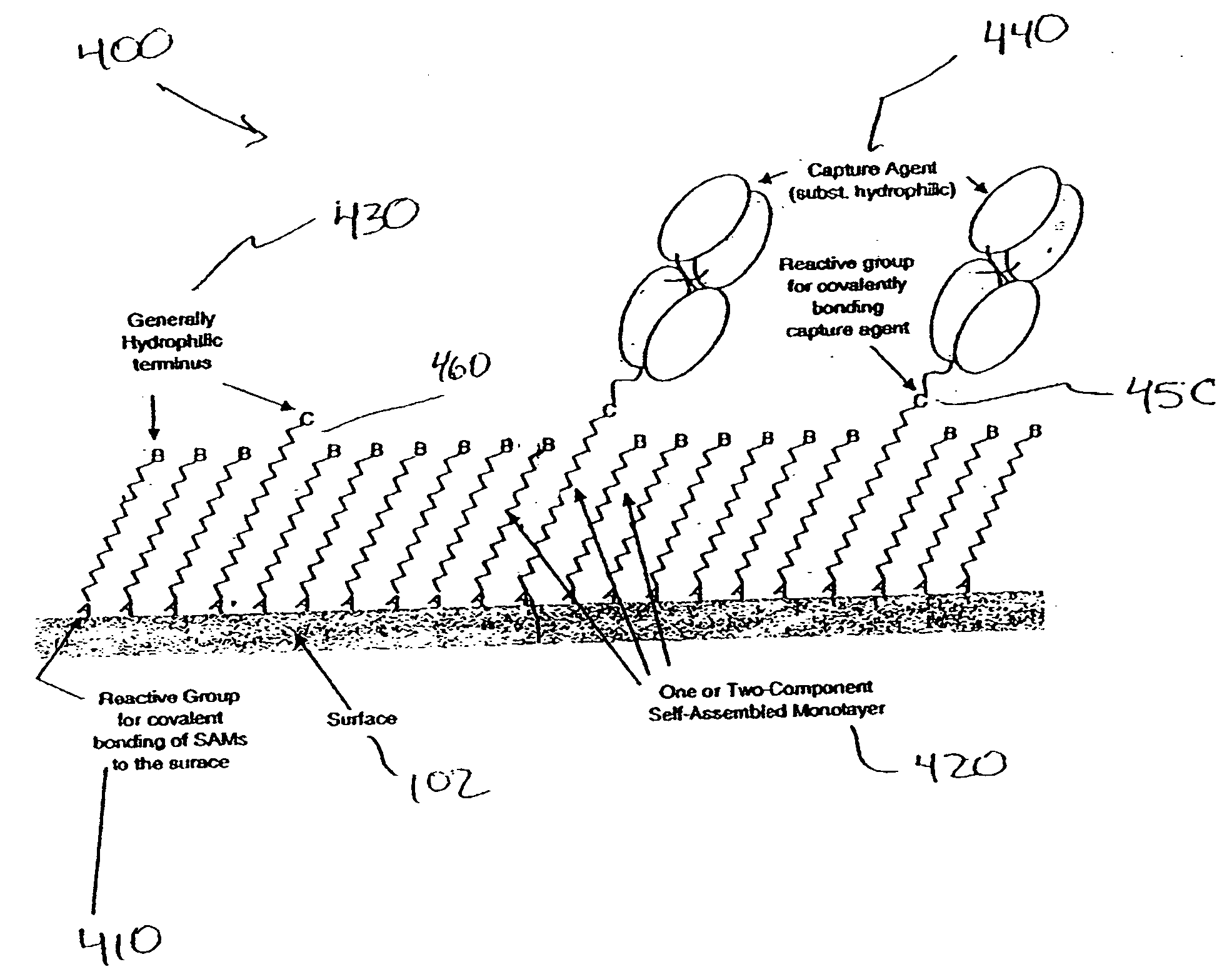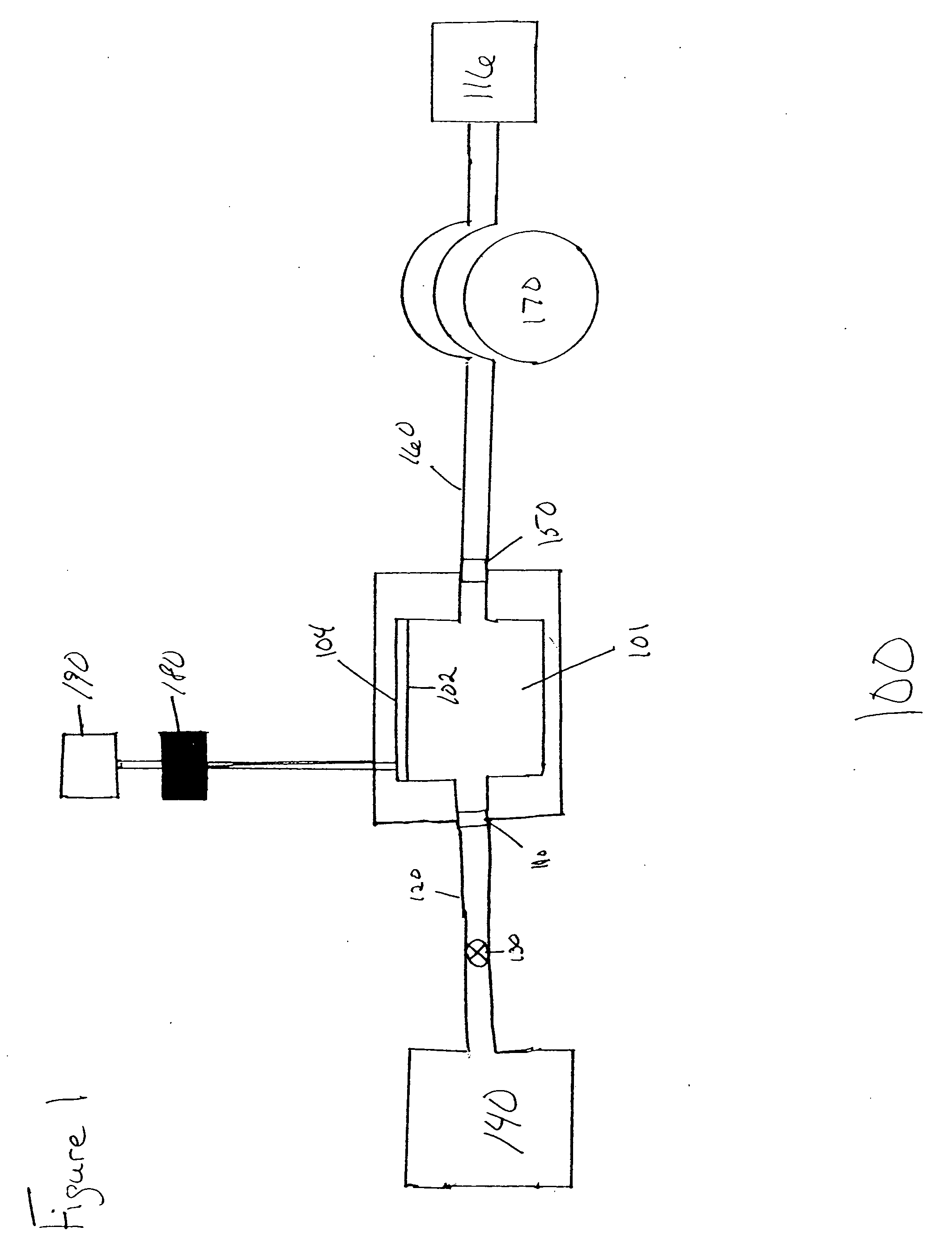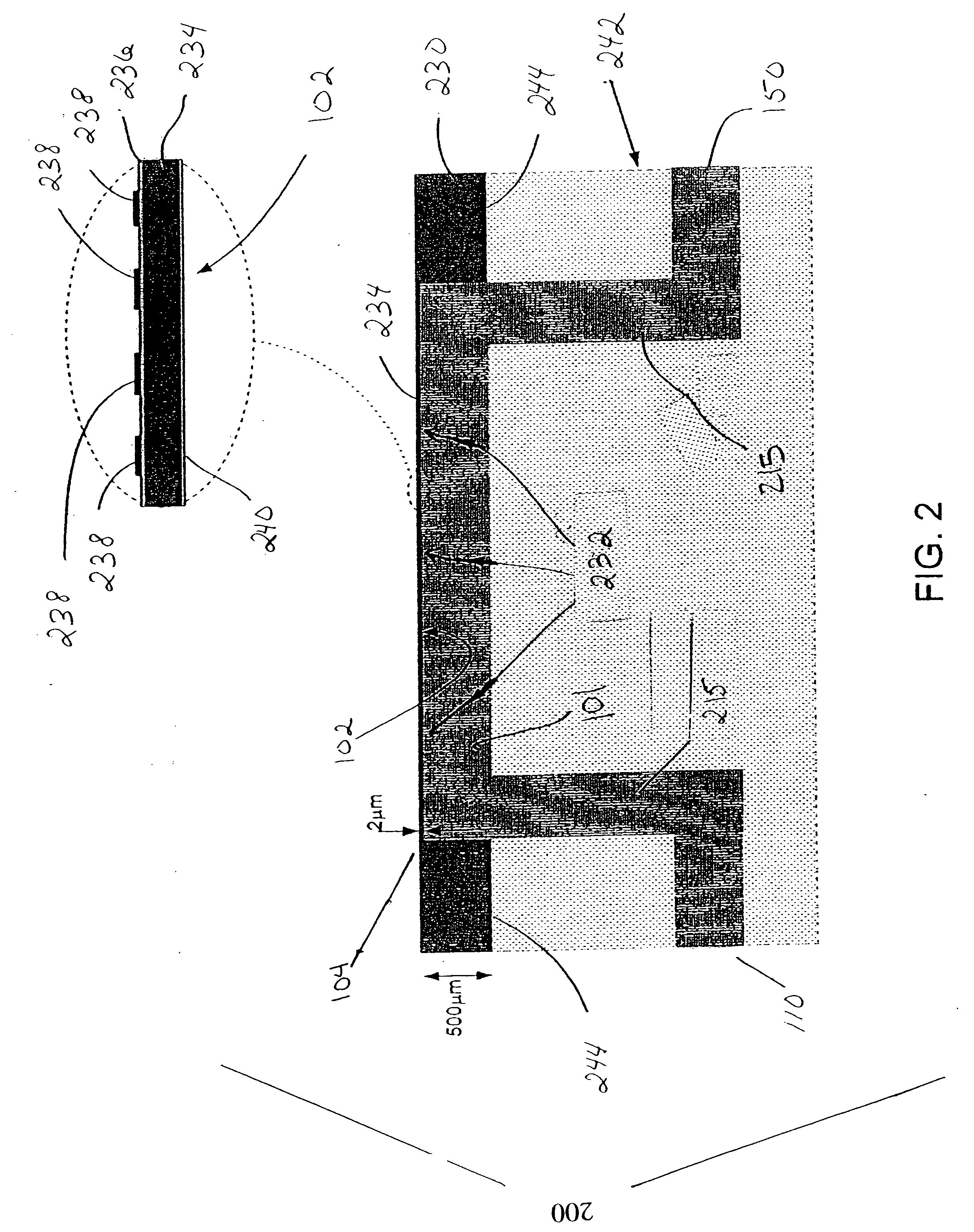Resonant sensor systems and methods with reduced gas interference
a resonant sensor and gas interference technology, applied in chemical methods analysis, instruments, suspensions and porous materials analysis, etc., can solve the problems of reducing the bulk fluid resistance, reducing the detection sensitivity of resonant sensor devices, and limiting the detection sensitivity achieved with dissolved gas,
- Summary
- Abstract
- Description
- Claims
- Application Information
AI Technical Summary
Benefits of technology
Problems solved by technology
Method used
Image
Examples
examples
[0135] In one embodiment, the resonant sensor system 100 of FIG. 1 is produced with the resonant sensor device 104 of FIG. 2. The resonant sensor device 104 is a flexural plate wave device. The device is produced from a silicon wafer using microfabrication techniques. A cavity is etched into the silicon wafer to produce a suspended membrane (234) that is approximately 1.6 mm long and 0.4 mm wide. The cavity depth 232 is approximately the wafer thickness, which in this case is 0.5 mm. The membrane 243 is a composite layer consisting of 2 μm of silicon (Si) with 0.5 μm of a piezoelectric aluminum nitride (AlN) (layer 236). Two sets of interdigitated metal electrodes 238 are deposited on top of the AIN layer 236. A time-varying electrical signal is applied to one set of electrodes to generate vibrations in the structure. The vibration characteristics of the resonant device 104 are monitored using the second set of electrodes 238. When a liquid, such as water, is in contact with one sid...
PUM
| Property | Measurement | Unit |
|---|---|---|
| water contact angle | aaaaa | aaaaa |
| contact angle | aaaaa | aaaaa |
| thickness | aaaaa | aaaaa |
Abstract
Description
Claims
Application Information
 Login to View More
Login to View More - R&D
- Intellectual Property
- Life Sciences
- Materials
- Tech Scout
- Unparalleled Data Quality
- Higher Quality Content
- 60% Fewer Hallucinations
Browse by: Latest US Patents, China's latest patents, Technical Efficacy Thesaurus, Application Domain, Technology Topic, Popular Technical Reports.
© 2025 PatSnap. All rights reserved.Legal|Privacy policy|Modern Slavery Act Transparency Statement|Sitemap|About US| Contact US: help@patsnap.com



